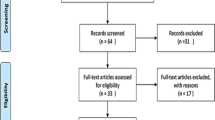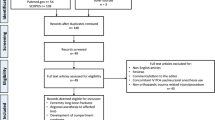Abstract
Purpose
The purpose of this study was to determine if increased milligram morphine equivalent (MME) requirements are a predictor of adult compartment syndrome in patients with tibia fractures.
Methods
A retrospective case-control study at a level-1 trauma center was performed over a five year period. Patients with tibia fractures who had acute compartment syndrome (ACS) requiring fasciotomy (n = 26) were matched with controls (n = 25). MME and pain scores were assessed within the 24 hour period preceding fasciotomy (cases) or fixation (controls). The presence or absence of the “6 Ps” and other clinical signs (diastolic blood pressure [DBP]) were also analyzed.
Results
Mean MMEs two hours before surgery was 25.5 ± 39.2 for ACS patients versus 8.6 ± 11.1 in controls (P = 0.043), while the mean pain scores were 8.8 ± 1.8 and 7.0 ± 2.5 (P = 0.049), respectively. Multivariable regression showed patients with ACS consumed 16.9 MME more than controls within two hours of surgery (P = 0.043) and scored 1.8 points higher on the numeric pain rating scale (P = 0.049). The mean number of clinical signs of compartment syndrome in the ACS patients was 3.4 ± 1.3 compared to 0.84 ± 0.85 in controls (P < 0.001). DBP was significantly higher in ACS patients within two to four hours of surgery (P = 0.005).
Conclusion
Increased MME requirements and pain scores within two hours of surgery were significant predictors of ACS following tibia fracture. Increased narcotic requirements, pain scores, and DBP may be useful objective indicators of evolving ACS, in addition to the traditional signs, and should be closely monitored in the at-risk patient.




Similar content being viewed by others
References
Prasarn ML, Ouellette EA (2011) Acute compartment syndrome of the upper extremity. J Am Acad Orthop Surg 19(1):49–58
Zhang D, Tarabochia M, Janssen SJ, Ring D, Chen N (2019) Acute compartment syndrome in patients undergoing fasciotomy of the forearm and the leg. Int Orthop 43(6):1465–1472. https://doi.org/10.1007/s00264-018-4060-2
von Keudell AG, Weaver MJ, Appelton PT, Bae DS, Dyer GS, Heng M, Jupiter JB, Vrahas MS (2015) Diagnosis and treatment of acute extremity compartment syndrome. Lancet 386(10000):1299–1310. https://doi.org/10.1016/S0140-6736(15)00277-9
McQueen MM, Court-Brown CM (2010) Early diagnosis of compartment syndrome: continuous pressure measurement or not? Injury 41(4):431–432; author reply 432-433. https://doi.org/10.1016/j.injury.2009.09.031
Olson SA, Glasgow RR (2005) Acute compartment syndrome in lower extremity musculoskeletal trauma. J Am Acad Orthop Surg 13(7):436–444
Elliott KG, Johnstone AJ (2003) Diagnosing acute compartment syndrome. J Bone Joint Surg (Br) 85(5):625–632
Matsen FA, Winquist RA, Krugmire RB (1980) Diagnosis and management of compartmental syndromes. J Bone Joint Surg Am 62(2):286–291
Sheridan GW, Matsen FA (1976) Fasciotomy in the treatment of the acute compartment syndrome. J Bone Joint Surg Am 58(1):112–115
Bhattacharyya T, Vrahas MS (2004) The medical-legal aspects of compartment syndrome. J Bone Joint Surg Am 86-A(4):864–868
McQueen MM, Gaston P, Court-Brown CM (2000) Acute compartment syndrome. Who is at risk? J Bone Joint Surg (Br) 82(2):200–203
McMillan TE, Gardner WT, Schmidt AH, Johnstone AJ (2019) Diagnosing acute compartment syndrome-where have we got to? Int Orthop 43(11):2429–2435. https://doi.org/10.1007/s00264-019-04386-y
Whitesides TE, Heckman MM (1996) Acute compartment syndrome: update on diagnosis and treatment. J Am Acad Orthop Surg 4(4):209–218
Bae DS, Kadiyala RK, Waters PM (2001) Acute compartment syndrome in children: contemporary diagnosis, treatment, and outcome. J Pediatr Orthop 21(5):680–688
Bendall JC, Simpson PM, Middleton PM (2011) Prehospital vital signs can predict pain severity: analysis using ordinal logistic regression. Eur J Emerg Med 18(6):334–339. https://doi.org/10.1097/MEJ.0b013e328344fdf2
Tousignant-Laflamme Y, Rainville P, Marchand S (2005) Establishing a link between heart rate and pain in healthy subjects: a gender effect. J Pain 6(6):341–347. https://doi.org/10.1016/j.jpain.2005.01.351
von Elm E, Altman DG, Egger M, Pocock SJ, Gotzsche PC, Vandenbroucke JP, Initiative S (2008) The Strengthening the Reporting of Observational Studies in Epidemiology (STROBE) statement: guidelines for reporting observational studies. J Clin Epidemiol 61(4):344–349. https://doi.org/10.1016/j.jclinepi.2007.11.008
McQueen MM, Duckworth AD, Aitken SA, Sharma RA, Court-Brown CM (2015) Predictors of compartment syndrome after tibial fracture. J Orthop Trauma 29(10):451–455. https://doi.org/10.1097/BOT.0000000000000347
Ali S, Chambers AL, Johnson DW, Craig WR, Newton AS, Vandermeer B, Curtis SJ (2014) Paediatric pain management practice and policies across Alberta emergency departments. Paediatr Child Health 19(4):190–194
Brown JC, Klein EJ, Lewis CW, Johnston BD, Cummings P (2003) Emergency department analgesia for fracture pain. Ann Emerg Med 42(2):197–205. https://doi.org/10.1067/mem.2003.275
Halpern AA, Nagel DA (1980) Anterior compartment pressures in patients with tibial fractures. J Trauma 20(9):786–790
Rorabeck CH, Macnab L (1976) Anterior tibial-compartment syndrome complicating fractures of the shaft of the tibia. J Bone Joint Surg Am 58(4):549–550
Ulmer T (2002) The clinical diagnosis of compartment syndrome of the lower leg: are clinical findings predictive of the disorder? J Orthop Trauma 16(8):572–577
Gelberman RH, Szabo RM, Williamson RV, Hargens AR, Yaru NC, Minteer-Convery MA (1983) Tissue pressure threshold for peripheral nerve viability. Clin Orthop Relat Res 178:285–291
Szabo RM, Gelberman RH, Williamson RV, Hargens AR (1983) Effects of increased systemic blood pressure on the tissue fluid pressure threshold of peripheral nerve. J Orthop Res 1(2):172–178. https://doi.org/10.1002/jor.1100010208
Kakar S, Firoozabadi R, McKean J, Tornetta P 3rd (2007) Diastolic blood pressure in patients with tibia fractures under anaesthesia: implications for the diagnosis of compartment syndrome. J Orthop Trauma 21(2):99–103. https://doi.org/10.1097/BOT.0b013e318032c4f4
Blick SS, Brumback RJ, Poka A, Burgess AR, Ebraheim NA (1986) Compartment syndrome in open tibial fractures. J Bone Joint Surg Am 68(9):1348–1353
Zweifach SS, Hargens AR, Evans KL, Smith RK, Mubarak SJ, Akeson WH (1980) Skeletal muscle necrosis in pressurized compartments associated with hemorrhagic hypotension. J Trauma 20(11):941–947
Author information
Authors and Affiliations
Corresponding author
Ethics declarations
The authors declare that they have no conflict of interest.
Disclaimer
The views expressed in the submitted article are our own and not an official position of the institution.
IRB approval
Approval was obtained from our institutional review board.
Additional information
Publisher’s note
Springer Nature remains neutral with regard to jurisdictional claims in published maps and institutional affiliations.
Appendices
Appendix 1
Appendix 2
Rights and permissions
About this article
Cite this article
Schloss, M., Weir, T.B., Jauregui, J.J. et al. Increased morphine requirements are predictive of acute compartment syndrome in adults with tibia fractures. International Orthopaedics (SICOT) 44, 743–752 (2020). https://doi.org/10.1007/s00264-019-04455-2
Received:
Accepted:
Published:
Issue Date:
DOI: https://doi.org/10.1007/s00264-019-04455-2




